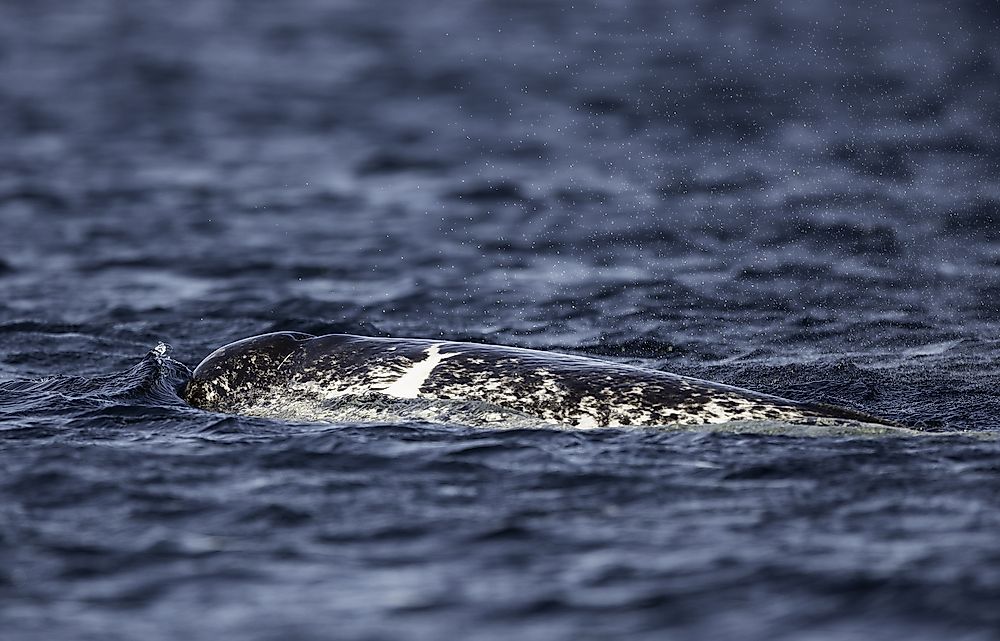Where Do Narwhals Live?

Narwhals are a type of whale that are characterized by large tusks that protrude from their canine teeth. Scientists believe that the tusks were used for fighting or as visual displays of the dominance of males to attract females; the tasks are mostly found in the male species. However, some reports have indicated that the tusks are used to break through the ice and to protect themselves from predators such as the orca whales and the polar bears. These species are classified under the Monodontidae family together with the beluga whale. The narwhals are generally referred to as the unicorns of the sea. According to a report by the World Wildlife Federation, there are more than 80,000 narwhals in the entire world. Narwhals are known to spend most of their lives in the cold waters of the Arctic Seas. Unlike other whales, the narwhals rarely migrate.
Distribution of Narwhals
These species are commonly found in Arctic waters of Russia, Norway, Greenland, and Canada. Two-thirds of the narwhals are in Canada while the remaining live in East Greenland. The narwhals are of different importance; for instance, in Canada, the narwhals were essential to the traditions and culture of Canada's aboriginal people. The narwhals are typically hunted for their ivory and skin. The high price of ivory internationally has put these whales in great danger. Although they are not generally threatened, this species faces a significant threat from factors such as climatic changes, and oil spillages. With the advancements in technology, more ships cross the Arctic Sea, increasing the chances of collisions which result to noise that alters the regular communication of the whales.
Habitat of Narwhals
As stated above, the narwhals are only found in the icy arctic waters; however, these whales are known to occupy different water levels depending on the season. For instance, during summer, the narwhals are observed to occupy the coastal areas. They are said to occupy these protected areas to easily get access to food. During the fall or winter, these whales prefer water depths that range from 1,000 to 5,000 meters. It can be observed that narwhals prefer areas with open waters and high density of ice. The breeding period of the narwhals varies typically between years and locations; however, these whales usually breed in spring. The gestation period is generally between fourteen and fifteen months. Females mature earlier than the males, and they are capable of producing offspring after seven years while males reach maturity between seven and thirteen years. The narwhals are carnivores in nature; they feed mostly on fish, squids, octopus, and crustaceans.
General Characteristics
The narwhals are generally medium-sized whales with protruding tusks and no dorsal fin. They are capable of making distinct sounds, and they are known to be highly sensitive to the underwater noise. They have developed communication skills, and they are known to make clicking sounds for echolocation and orientation. Other communication techniques applied by these whales include growling, squealing and whistling. They are capable of detecting ships that are as far away as eighty kilometers.











